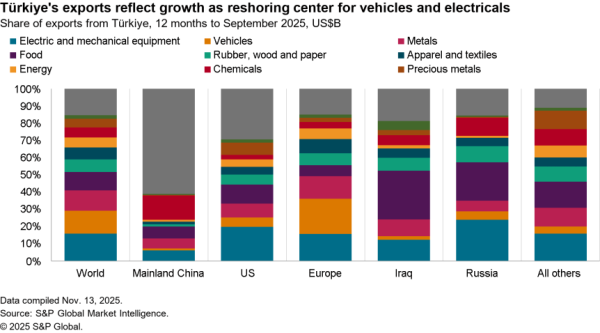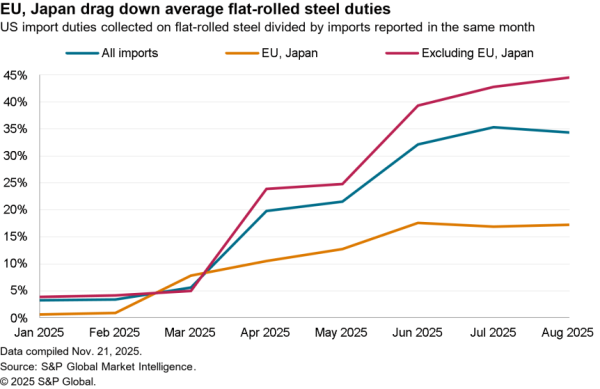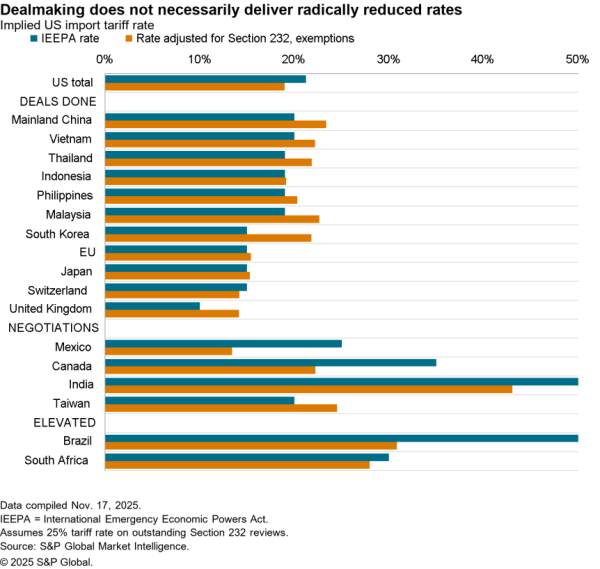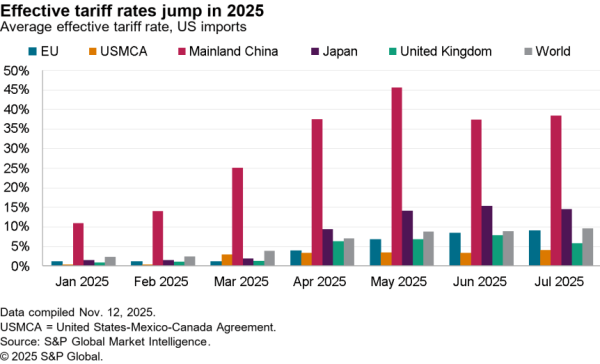Sports apparel retailer Lululemon experienced increased profitability in the quarter to Aug. 4 compared to a year earlier “despite the additional air freight expense we incurred as a hedge against potential port congestion related to China tariffs” according to CFO Patrick Guido.
Guido also expects to see a drag to earnings per share of 4 cents to 5 cents due to increased costs “related to the new tariffs and incremental air freight costs used as a hedge against possible port congestion.” That compares to earnings in the past four quarters of $4.07, S&P Global Market Intelligence data shows.
The relatively small impact, according to Guido, is because “our direct exposure to China is relatively small, with approximately 6% of our finished goods in scope for U.S. tariffs. That percentage is down considerably, given how we have diversified our vendor base.”
The impact of U.S. tariffs on U.S. imports from China for Lululemon may become visible in the coming quarter given most apparel tariffs have been applied from Sept. 1, as outlined in Panjiva’s research of Aug. 13, though some may also be delayed to the later Dec. 15 round of increases.
In the aggregate growth remains robust in terms of U.S. seaborne imports associated with Lululemon. Panjiva data shows there was growth of 15.1% year over year in the three months to Jul. 31. While there was a drop of 3.2% year over year in August the firm’s increased shipping by air likely means that’s not a complete representation of activity.

Source: Panjiva
At a regional level the firm has already started cutting back its imports from China with a 61.9% year over year slump in August. That’s part of a longer-term downturn that’s seen imports from China, including Hong Kong, reach just 12.7% of the total in the 12 months to Aug. 31, down from 21.4% in calendar 2016.
Lululemon’s main supply center remains Vietnam, representing 23.9% of the total in the past 12 months. There’s been a significant increase in imports from Cambodia to 11.7% of the total from 7.2% in 2016, while shipments from Indonesia to 4.9% from 18.0%.

Source: Panjiva
The shift out of China has been part of a widespread diversification of the firm’s supply chain. The largest remaining exposure to China and Hong Kong comes from 89 TEUs of sports bags (HS 4202) imported in the past 12 months as well as 40 TEUs women’s yoga pants (HS 6104). The firm already sources both product categories from other suppliers and so, at least in theory, could cut its exposure to China even further.

Source: Panjiva




